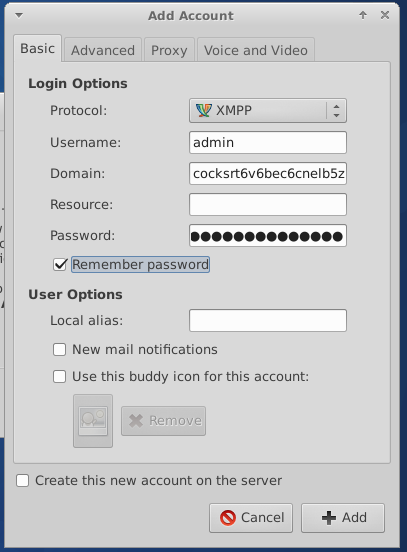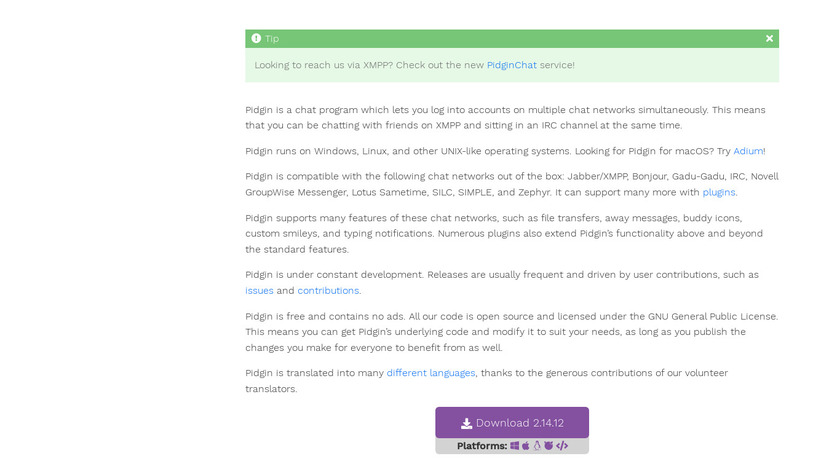


Pidgin xmpp tutorial password#
Typein your special BIP password (you’ve read the bip documentation, haven’t you !?) which is made up of three things separated by colons:.Here, instead of typing your preferred username (which will become your nick if no other options are set), type a significant name that will identify the IRC server, e.g., “mozilla” if the intended IRC server is to be.In piding, go to your accounts by striking Ctrl-A and add the first account by pressing the “Add…” button.Let’s make use of the BIP “ignore_first_nick” option! The following steps assume you’ve got a decently-configured BIP sitting (not running) on, and that you’re about to create, let say, 2 IRC server accounts in pidgin. IMO, the biggest challenge any pidgin user will experience when configuring his client for IRC Proxy is to overcome the sudden but painful understanding of the following fact : pidgin won’t let you create multiple IRC accounts unless they have different ‘server’ AND ‘user’ fields ! But of course, the problem is that all of your BIP-IRC servers (set in bip.conf) must be accessed using the same server (the host on which you’re running bip) and of course, you wanna log into your channels using the same username and/or nick ! So at first, I was stunned to realize that pidgin wouldn’t let me create my different accounts and considered them duplicates !! You gotta face the “an account already exists with the specified criteria” message many times to understand my despair.īut there is actually a very nice solution to this. So the following tutorial will assume you’ve configured your “bip.conf” to something acceptable and that you’ve tried setting accounts in pidgin to point to your bip IRC proxy on the chosen port with proper passwords. I assume hereafter that you’re wise enough to read thoroughly and understand fairly the provided bip documentation.
Pidgin xmpp tutorial how to#
That being said, I thought I could offer the web a little tutorial on how to configure pidgin to work nicely with BIP, because there are some non-obvious parameters to set both on the bip and pidgin sides.

The Collabora people I’m working with are in favor of using BIP, a nice IRC proxy. My situation is not unique, as I’m sure every developer/engineer with cross-platform tasks and/or multiple virtualized systems must encounter this frequent need for rebooting, thus, making the whole IRC community annoyed with /join and /quit messages. I really think it’s a great tool mainly because you can easily add ANY type of IM account to it… XMPP/Jabber, ICQ, MSN, Google Talk, IRC, etc… and also because it’s really cross-platform! The only problem is when I started working with Collabora and realized I was bothering people bad by constantly logging in and out of every automatic channels I had registered in pidgin.

I’ve been using pidgin for some time now, as a mean to centralize all my IM communications.


 0 kommentar(er)
0 kommentar(er)
